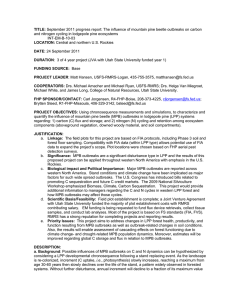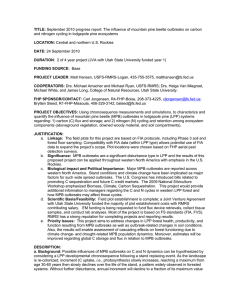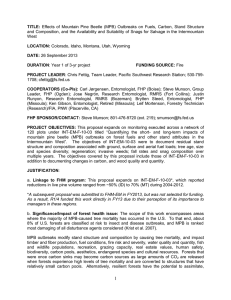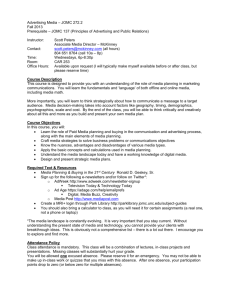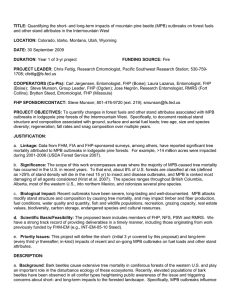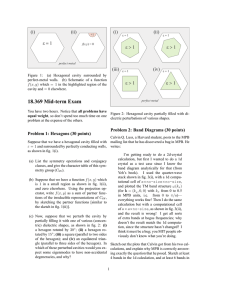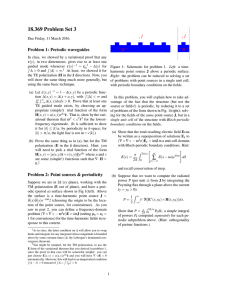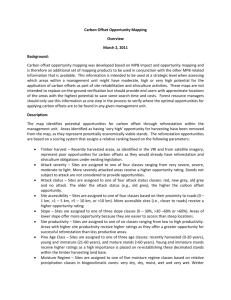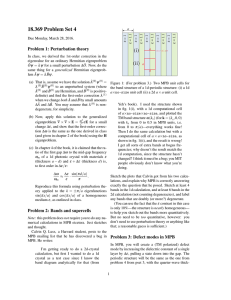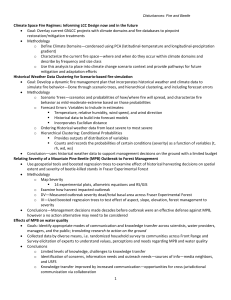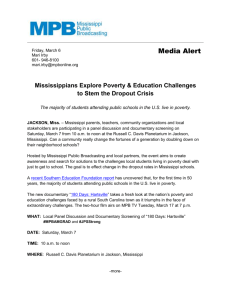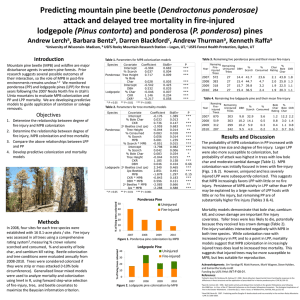TITLE: LOCATION: DATE:
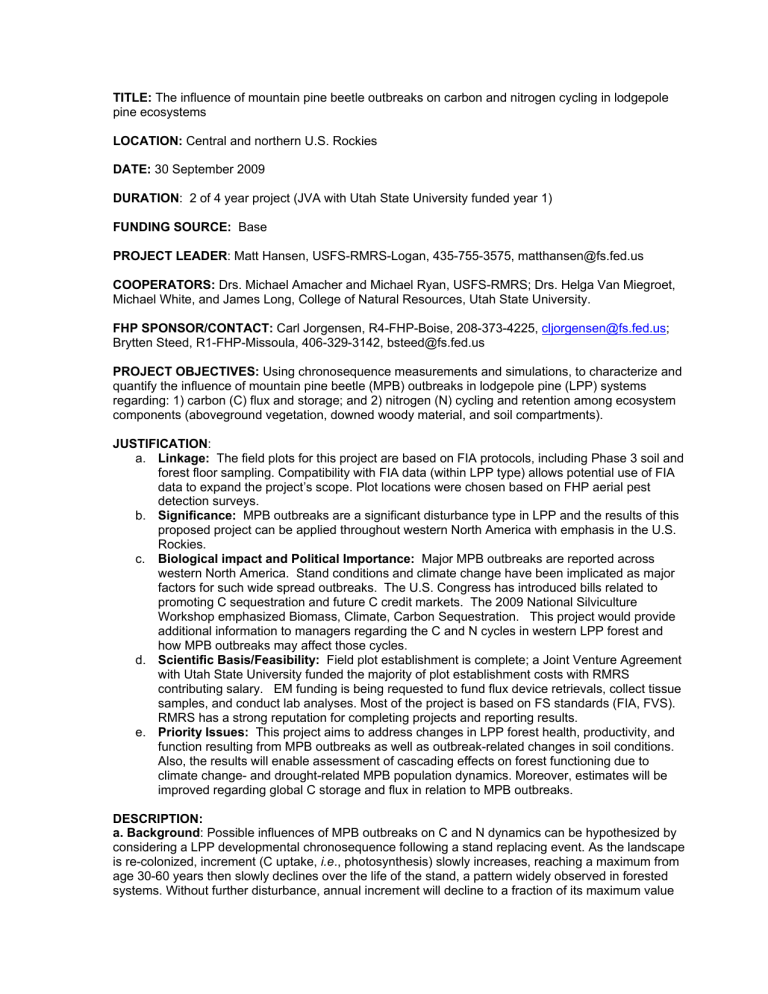
TITLE: The influence of mountain pine beetle outbreaks on carbon and nitrogen cycling in lodgepole pine ecosystems
LOCATION: Central and northern U.S. Rockies
DATE: 30 September 2009
DURATION : 2 of 4 year project (JVA with Utah State University funded year 1)
FUNDING SOURCE: Base
PROJECT LEADER : Matt Hansen, USFS-RMRS-Logan, 435-755-3575, matthansen@fs.fed.us
COOPERATORS: Drs. Michael Amacher and Michael Ryan, USFS-RMRS; Drs. Helga Van Miegroet,
Michael White, and James Long, College of Natural Resources, Utah State University.
FHP SPONSOR/CONTACT: Carl Jorgensen, R4-FHP-Boise, 208-373-4225, cljorgensen@fs.fed.us
;
Brytten Steed, R1-FHP-Missoula, 406-329-3142, bsteed@fs.fed.us
PROJECT OBJECTIVES: Using chronosequence measurements and simulations, to characterize and quantify the influence of mountain pine beetle (MPB) outbreaks in lodgepole pine (LPP) systems regarding: 1) carbon (C) flux and storage; and 2) nitrogen (N) cycling and retention among ecosystem components (aboveground vegetation, downed woody material, and soil compartments).
JUSTIFICATION : a. Linkage: The field plots for this project are based on FIA protocols, including Phase 3 soil and forest floor sampling. Compatibility with FIA data (within LPP type) allows potential use of FIA data to expand the project’s scope. Plot locations were chosen based on FHP aerial pest detection surveys. b. Significance: MPB outbreaks are a significant disturbance type in LPP and the results of this proposed project can be applied throughout western North America with emphasis in the U.S.
Rockies. c. Biological impact and Political Importance: Major MPB outbreaks are reported across western North America. Stand conditions and climate change have been implicated as major factors for such wide spread outbreaks. The U.S. Congress has introduced bills related to promoting C sequestration and future C credit markets. The 2009 National Silviculture
Workshop emphasized Biomass, Climate, Carbon Sequestration. This project would provide additional information to managers regarding the C and N cycles in western LPP forest and how MPB outbreaks may affect those cycles. d. Scientific Basis/Feasibility: Field plot establishment is complete; a Joint Venture Agreement with Utah State University funded the majority of plot establishment costs with RMRS contributing salary. EM funding is being requested to fund flux device retrievals, collect tissue samples, and conduct lab analyses. Most of the project is based on FS standards (FIA, FVS).
RMRS has a strong reputation for completing projects and reporting results. e. Priority Issues: This project aims to address changes in LPP forest health, productivity, and function resulting from MPB outbreaks as well as outbreak-related changes in soil conditions.
Also, the results will enable assessment of cascading effects on forest functioning due to climate change- and drought-related MPB population dynamics. Moreover, estimates will be improved regarding global C storage and flux in relation to MPB outbreaks.
DESCRIPTION: a. Background : Possible influences of MPB outbreaks on C and N dynamics can be hypothesized by considering a LPP developmental chronosequence following a stand replacing event. As the landscape is re-colonized, increment (C uptake, i.e
., photosynthesis) slowly increases, reaching a maximum from age 30-60 years then slowly declines over the life of the stand, a pattern widely observed in forested systems. Without further disturbance, annual increment will decline to a fraction of its maximum value
and live volume will approach some asymptotic value. Meanwhile, N dynamics are tied to the C cycle.
Autotrophic nutrient demand is greatest during maximal biomass increment. Thus, relatively young stands should maximally retain N whereas mature stands are more likely to have increased N losses via leaching. Contrast this to an otherwise similar LPP chronosequence with a cycle of MPB outbreaks every 40-60 years beginning at stand age 100. The resulting death of overstory trees initiates a chain of events that modify C and N accumulation, storage, and retention. Understanding these cycles will enhance managers' ability to match vegetation and MPB management with desired outcomes regarding stand productivity, N availability/retention, and C sequestration. b. Methods: A variety of methods will be used to measure and simulate C and N dynamics during LPP development, with and without MPB disturbance and at multiple temporal and spatial scales.
Empirical data Forty-one field plots were established in 2009 at three regions (northeast UT, central
ID, and near Yellowstone NP) representing a variety of MPB history and LPP development. These plots, based on FIA “Phase 3” plots but with additional flux measurements, are intended to quantify stand-level C and N pools and fluxes. Tissue samples will be taken from the various vegetation types, live and dead, and analyzed for C and N concentrations. C and N pools and fluxes will be directly compared among infested and uninfested areas.
Simulation models Two simulation models, FVS (Forest Vegetation Simulator; an empirical growth and yield model) and FVS-BGC (links FVS with Stand BGC, a process-based, C balance model), will be used to simulate chronosequences of LPP stand development, with and without MPB disturbance.
Simulations will aim to track C storage and fluxes from stand establishment through multiple centuries of development. N pools and fluxes will also be estimated using information gathered from the field plots in conjunction with allometric equations.
Remote sensing Light use efficiency (LUE) models based on remotely sensed data are widely used to estimate landscape- and global-scale gross and net primary production (GPP and NPP). These models, however, do not address stand age-related declines in productivity. We will use the 3PGS model
(Physiological Principles Predicting Growth from Satellites) which couples elements of empirical growth and yield models with process-based, C balance models. In addition to using LUE-type input, 3PGS uses a stand age-dependent growth modifier. Assessment of MPB disturbance effects on C dynamics, as estimated by 3PGS, will consider MPB history based on ground and Forest Health Protection aerial detection survey data. c. Products: Peer-reviewed articles and presentations at conferences (e.g., Western Forest Insect
Work Conference). Managers can use this information to model vegetation treatments for any possible
"beneficial" affects of MPB outbreaks as well as mitigate any possible "detrimental" affects. d. Schedule of Activities:
Summer 2010:
Final flux measurements at field plots; collect tissue samples.
Fall 2010 and winter 2011:
Lab analyses of flux and tissue samples.
Obtain satellite-based data and associated ground data.
Run FVS and 3PGS simulations.
Spring and summer 2011:
Construct complementary chronosequences from field plots, FVS, and satellite-based simulations.
Fall 2011 and winter 2012:
Manuscript preparation and submission.
COSTS:
YEAR 2010
Item
Requested
FHM EM
Funding
Procurements Contracting
Other-
Source
Funding
Administration Salary 15,000
Overhead
32,500
Travel 2,000
Equipment
Supplies
Total 25,848
3,000
5,000
40,500
Source
RMRS
USU-JVA
USU-JVA
Item
YEAR 2011
Administration Salary
Overhead
Procurements Contracting
Equipment
Supplies
Total
Requested
FHM EM
Funding
18,500
1,425
19,925
Other-
Source
Funding
35,000
2,000
37,000
Source
RMRS
USU-JVA
Item
Requested
FHM EM
Funding
YEAR 2012
Administration Salary
Overhead 154
Procurements Contracting
Total
2,000
2,154
Other-
Source
Funding
20,000
Source
Grand total (3 years) 47,927
Specifically, requested funds will be used to support: 1) a field technician (summer 2010) and lab technician (fall 2010 and winter 2010/2011); 2) travel for Hansen and the technician; 2) leased vehicle and associated fuel costs for travel to field sites. RMRS charges 7.7% overhead on intra-agency transfers. An additional $2,000 is requested for FY 2012 to pay for journal page charges. Thus, the total request is $47,927.
Literature cited and preliminary results available upon request.
